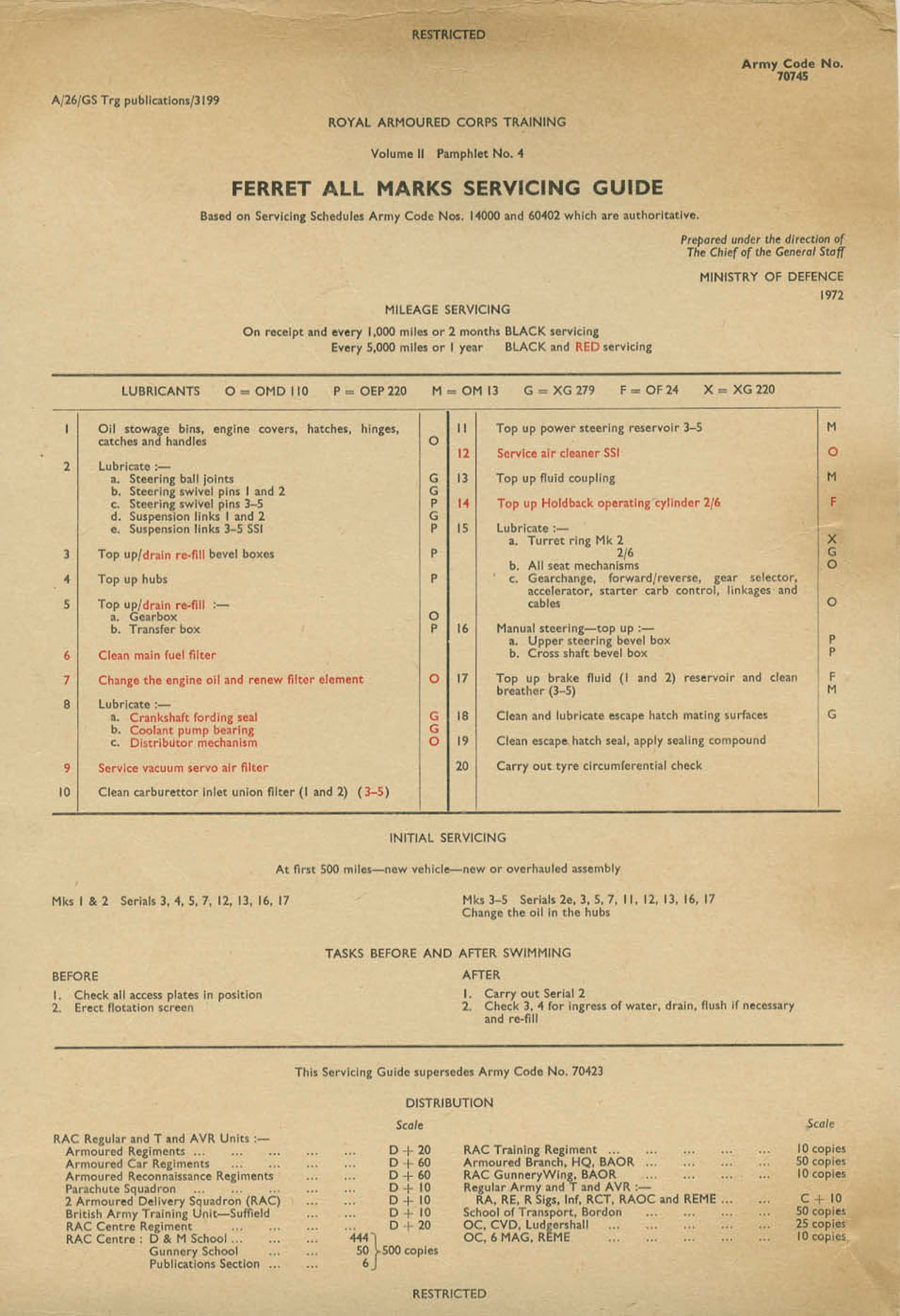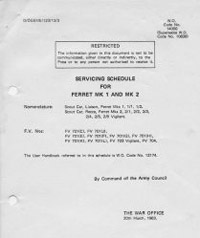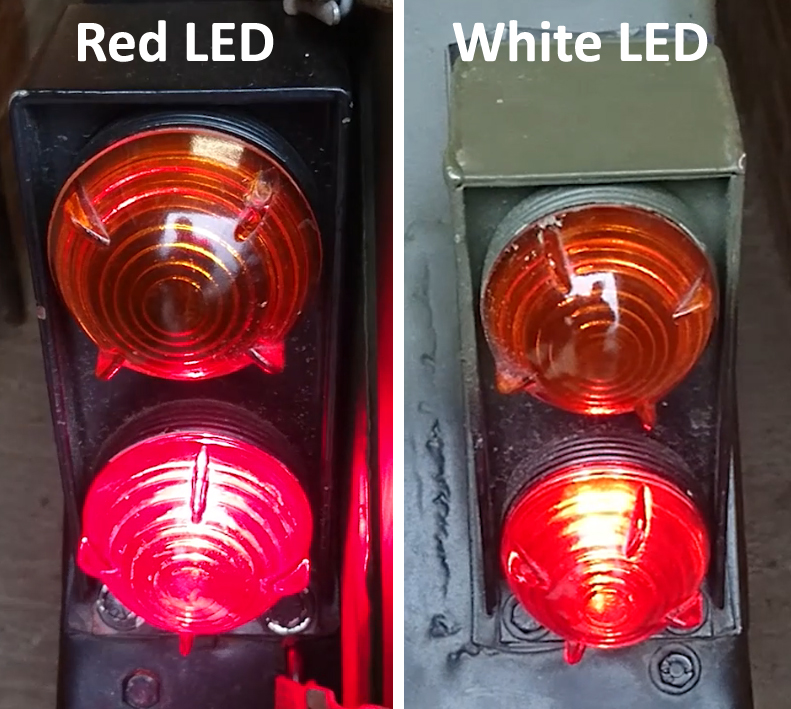Lets be clear at the outset: owning a Ferret is tremendous fun! It is also a privilege to own this popular classic military vehicle. Some owners take the time and effort to acquire all the parts to match the CES (complete equipment schedule) list of tools and spares, the stowage diagrams and extensively research the vehicle’s military career and which units it served with. For others the priority is the enjoyment of driving a well-maintained vehicle. I’m not a re-enactor, but Ferret ownership has enabled me to be involved in my local branch of the MVT, as well as the Daimler Ferret Owners’ Group, an affiliation of enthusiasts based in Kent.
Owners’ responsibilities
As an ex-British army vehicle, the Ferret is well-made – over-engineered in most respects – but it is not cheap to run or maintain. However, the good news is that as a historic vehicle its VED class is zero-rated, and if it is built before 1960 it is also MOT-exempt (but read the small print about keeping the vehicle roadworthy!). Despite being zero-rated for vehicle tax, you still need to be ‘on the books’ and must tax the vehicle, even though you don’t need to pay. Have a look at this explanation by Honest John from The Daily Telegraph. Driving an untaxed vehicle currently attracts an £80 fine. Not keeping your Ferret in a roadworthy condition will incur a £2,500 fine and 3 penalty points. Drivers holding a licence after 31st December 1996 cannot drive a vehicle with a mass greater than 3.5 tonnes, need a category C1 update to their standard B driving licence. There is a loophole that permits these drivers to drive a vehicle manufactured before 1960, for these are exempt from The Motor Vehicles (Driving Licences) Regulations 1999, section 51 (1) part (l).
Most Ferrets are not fitted with a seat belt for the driver, although these are available. The law regarding seat belts is explained here. As a historic vehicle the Ferret is also exempt from the London LEZ (low emission zone). However, despite being a historic vehicle, it is not exempt from the Congestion Charge in either of the two cities (Durham and London) where this currently applies. The DVLA pamphlet INF34 explains the position regarding historic vehicles, as does Honest John from The Daily Telegraph. From October 2017 a daily £10 London toxicity charge (Emissions Surcharge) is levied upon vehicles registered before 2006, which drive in the Congestion Charge zone between 07:00 and 18:00 and do not meet Euro 4/IV emissions standards, although Ferrets are exempt as historic vehicles.
We live in a society under terrorist threat; many of our fellow citizens are fearful and won’t necessarily regard your prized vehicle in the same way as you do. In my view, Ferret and other ex-military armour owners have a civic responsibility to act sensibly and in a responsible manner. My vehicle has been reported to the police whilst in transit, and I’ve also been followed by an unmarked police car and questioned – the officers were pleasant, friendly and just doing their job. It helps that the local police are aware, and have my contact details. If a terrorist incident is widely reported by the media and/or the national threat level is raised, I keep the Ferret garaged and don’t take it out: that’s common-sense, really. I am a member of the Military Vehicle Trust. This organisation is worth joining for the cameraderie of the local club meetings, attendance at shows and PPLI insurance cover. In view of the VCR Act 2006 I’ve decided always to keep the canvas mantlet cover on that goes over the barrel of the 30 cal. The cover only ever comes off at a show. I also keep a copy of the deactivation certificate with the papers in the vehicle.
Wind up
Due to the H-differential pattern, drive-line wind up is a problem of which owners and drivers must be aware! The Ferret is designed as an off-road vehicle, allowing natural slippage to the wheels to occur. It excels off-road. If the vehicle is driven fast and/or extensively on motorways and dual carriageways, it will suffer. This will not happen so readily on smaller A- and B-roads which have more uneven surfaces. Windup is exacerbated when components heat up through speed. A permanent non-changing load will make this worse. In the Army you used to be put on a charge if a Ferret was driven over 40 mph. If an accident occurred whilst on duty, Form F/MT 3-3 was filled in.
Wind up will eventually loosen the wheels so that they part company from the axle. The consequences are expensive and damaging to the Ferret, and potentially also to other vehicles, passengers, wives/mothers/girlfriends, children and pets, as well as causing you reputational loss. If this happens whilst driving, you’ll know all about it: the wheel will continue forward, the Ferret will grind to a halt and likely turn over. If you have a passenger in a Mk 2 as ‘top-commander’, they may well die from being cut in two by the roof hatch unless they drop into the fighting comaprtment quickly. Old soldiers familiar with armour all have these stories. In one instance on the A12 (not my vehicle) the errant wheel hit an oncoming Mercedes whilst the Ferret spun into a ditch concussing the driver. All this happened because the Ferret was not well-maintained. See this page for more about drive-line wind up.
Routine servicing schedule & running costs
In service, the Army required routine vehicle inspection, called the Commander’s Functional Test. Here are two versions to download: one from 1969 and the other a much later 1984 copy. I’ve put information on regular servicing and lubrication tasks onto this page here. Correct lubrication is far more important with the Ferret’s older design than for a modern car, for its hub reduction gear and other components are heavier and run under greater load. Besides grease and SAE30 engine oil, its essential also to keep a stock of EP-90 extreme pressure oil. I buy my stock in bulk from Rye Oil.
For running costs, see this page and here.
Safety
Unlike a conventional car, the Ferret exhaust is chest or waist height. It is exposed and gets very hot! The pictures to the right show the temperature recorded after a four mile run: 300ºC on the exhaust itself (rising to 330 ºC ) and 137 ºC on the exhaust cowl. I carry a cone in the right-hand rear bin to keep people away for the first few minutes whilst at shows. Be particularly aware of children who can be seriously hurt by the hot exhaust and its cover unless due care is taken.
The front (and rear) hatches are held open with a knuckle joint. Be extremely careful opening and closing these, and do not stand on the opened hatches. These armoured hatches are heavy, and can easily crush or remove your digits – a condition known as ‘Ferret finger‘. Having suffered a broken finger, I now keep a first-aid ‘grab bag’ in the fighting compartment. Also, see these notes about parking the Ferret and preventing it from rolling away.
Because the Ferret is noisy, to improve the SNR of speech over the intercom, I’ve chosen to install auto noise-reduction (ANR) headsets into the intercom harness with audio amp and loudspeaker. To check sound levels you can get two phone apps: Soundprint 2.0 and DecibelX.
LED lights
I’ve also chosen to fit LED lights in place of the side-lights and rear/brake lights because they are brighter and draw much less current, heat up much less and so are easier on old wiring looms. I buy my LED bulbs from Classic Car LEDs; using warm white for the sidelights and red LEDs for the tail/stop (brake) lights. They have a P36D LED headlamp bulb coming shortly. For the internal lights I bought BA15s LEDs from Car Mod Shop. I’ve left the indicators as incandescent bulbs because they work off a thermal relay that will not work with an LED drawing a very low current. If a conversion is made, the solution is to use an LED-compatible flasher unit or else to install load resistors into the wiring circuit.
Other tips
The wing mirrors issued were tiny. It is better to fit larger Landrover wing mirrors for greater visibility. At least one person I know carries an extra hand-held mirror fashioned out of an old wing mirror in his Ferret. When one of mine cracked, I got a replacement from here. Other Landrover parts suppliers are listed on the Suppliers and Dealers page.
Because entry into the turret is by climbing on the rear-left-hand (nearside) storage bin away from the exhaust, I have had the lid of this bin reinforced so that it is not bent from continual climbing in and out of the vehicle. The carrier for the ammunition boxes is also screwed down within a custom-made tray fixed to the rear mudguard, first so that it will not detach and fly into following traffic, and secondly to provide a firm handhold to mount the vehicle. The cooker set likewise has a non-issue custom-fabricated holder to ensure that it remains firmly on the vehicle.
The internal accessories fitted into each Ferret differ widely. This PDF illustrates the early stowage diagrams. There wasn’t (and still isn’t!) enough room to carry all the kit accrued by soldiers, and so you’ll come across photos of Ferrets in service, as well as those on the civilian circuit, with equipment stowed in all sorts of places and festooned off the hull and decks. Towards the end of the service life of the Ferret, a large open wire mesh tray was mounted over the engine decks. It was hinged to enable access to the engine, and proved extremely useful during Operation Granby. How you wish to paint your Ferret is entirely up to you. Here is a white UN Ferret 2/3, such as would have served in Cyprus, alongside another NATO temperate camouflage colour scheme. In the two lower panels are Ferrets painted in Deep Bronze Green and Brilliant Green the army would have used these as parade vehicles. One of the Bovington Ferrets in Berlin urban camouflage is shown on the upper right. However, be warned that this scheme is effective in towns, and at least one Ferret so painted has been involved in a collision at a junction.






